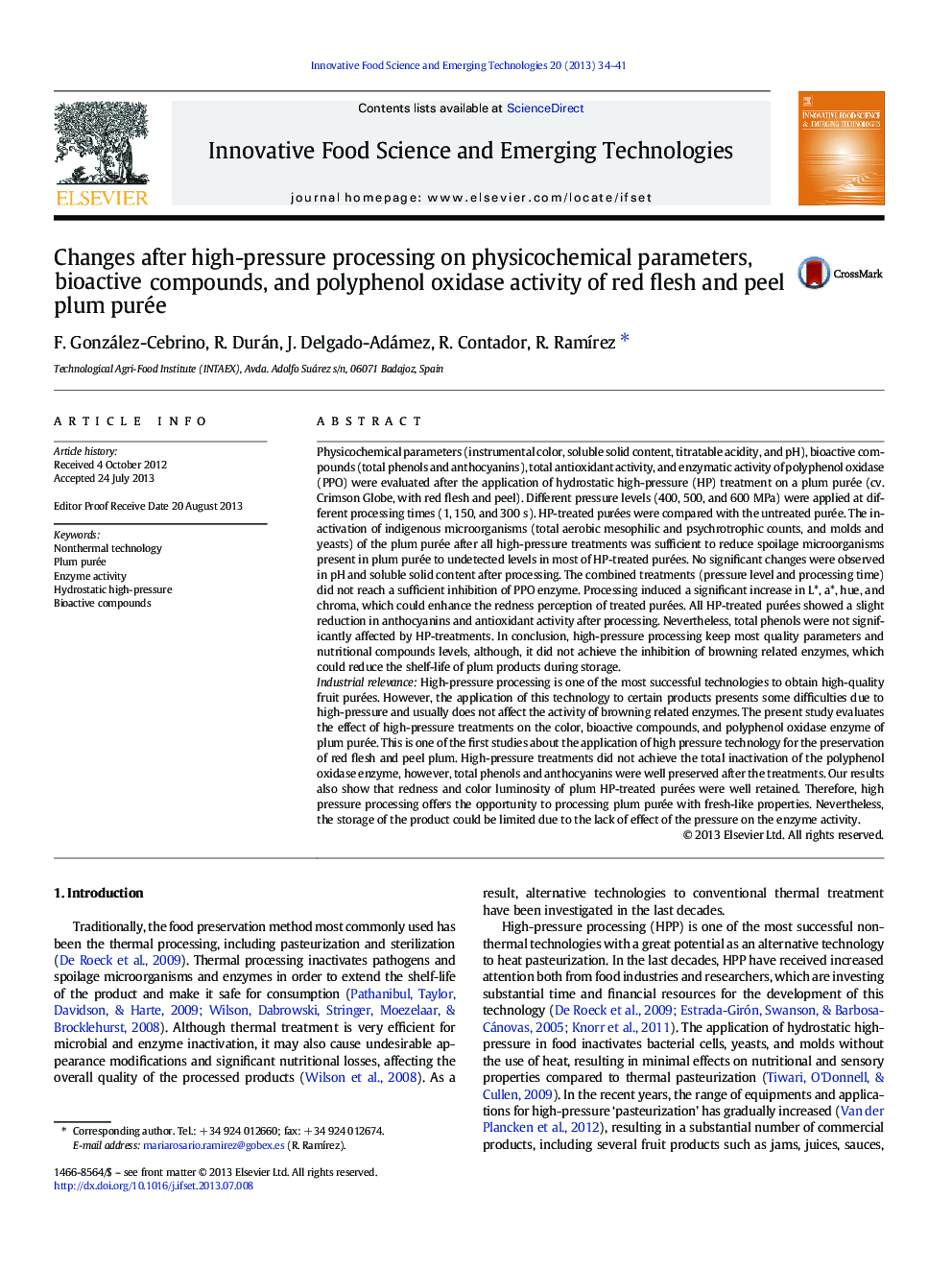| Article ID | Journal | Published Year | Pages | File Type |
|---|---|---|---|---|
| 2086567 | Innovative Food Science & Emerging Technologies | 2013 | 8 Pages |
•HPP maintained a fresh like color of plum purée.•Purée retained most bioactive compounds after HPP.•The pressure resistance of the PPO could reduce the shelf-life of products.
Physicochemical parameters (instrumental color, soluble solid content, titratable acidity, and pH), bioactive compounds (total phenols and anthocyanins), total antioxidant activity, and enzymatic activity of polyphenol oxidase (PPO) were evaluated after the application of hydrostatic high-pressure (HP) treatment on a plum purée (cv. Crimson Globe, with red flesh and peel). Different pressure levels (400, 500, and 600 MPa) were applied at different processing times (1, 150, and 300 s). HP-treated purées were compared with the untreated purée. The inactivation of indigenous microorganisms (total aerobic mesophilic and psychrotrophic counts, and molds and yeasts) of the plum purée after all high-pressure treatments was sufficient to reduce spoilage microorganisms present in plum purée to undetected levels in most of HP-treated purées. No significant changes were observed in pH and soluble solid content after processing. The combined treatments (pressure level and processing time) did not reach a sufficient inhibition of PPO enzyme. Processing induced a significant increase in L*, a*, hue, and chroma, which could enhance the redness perception of treated purées. All HP-treated purées showed a slight reduction in anthocyanins and antioxidant activity after processing. Nevertheless, total phenols were not significantly affected by HP-treatments. In conclusion, high-pressure processing keep most quality parameters and nutritional compounds levels, although, it did not achieve the inhibition of browning related enzymes, which could reduce the shelf-life of plum products during storage.Industrial relevanceHigh-pressure processing is one of the most successful technologies to obtain high-quality fruit purées. However, the application of this technology to certain products presents some difficulties due to high-pressure and usually does not affect the activity of browning related enzymes. The present study evaluates the effect of high-pressure treatments on the color, bioactive compounds, and polyphenol oxidase enzyme of plum purée. This is one of the first studies about the application of high pressure technology for the preservation of red flesh and peel plum. High-pressure treatments did not achieve the total inactivation of the polyphenol oxidase enzyme, however, total phenols and anthocyanins were well preserved after the treatments. Our results also show that redness and color luminosity of plum HP-treated purées were well retained. Therefore, high pressure processing offers the opportunity to processing plum purée with fresh-like properties. Nevertheless, the storage of the product could be limited due to the lack of effect of the pressure on the enzyme activity.
